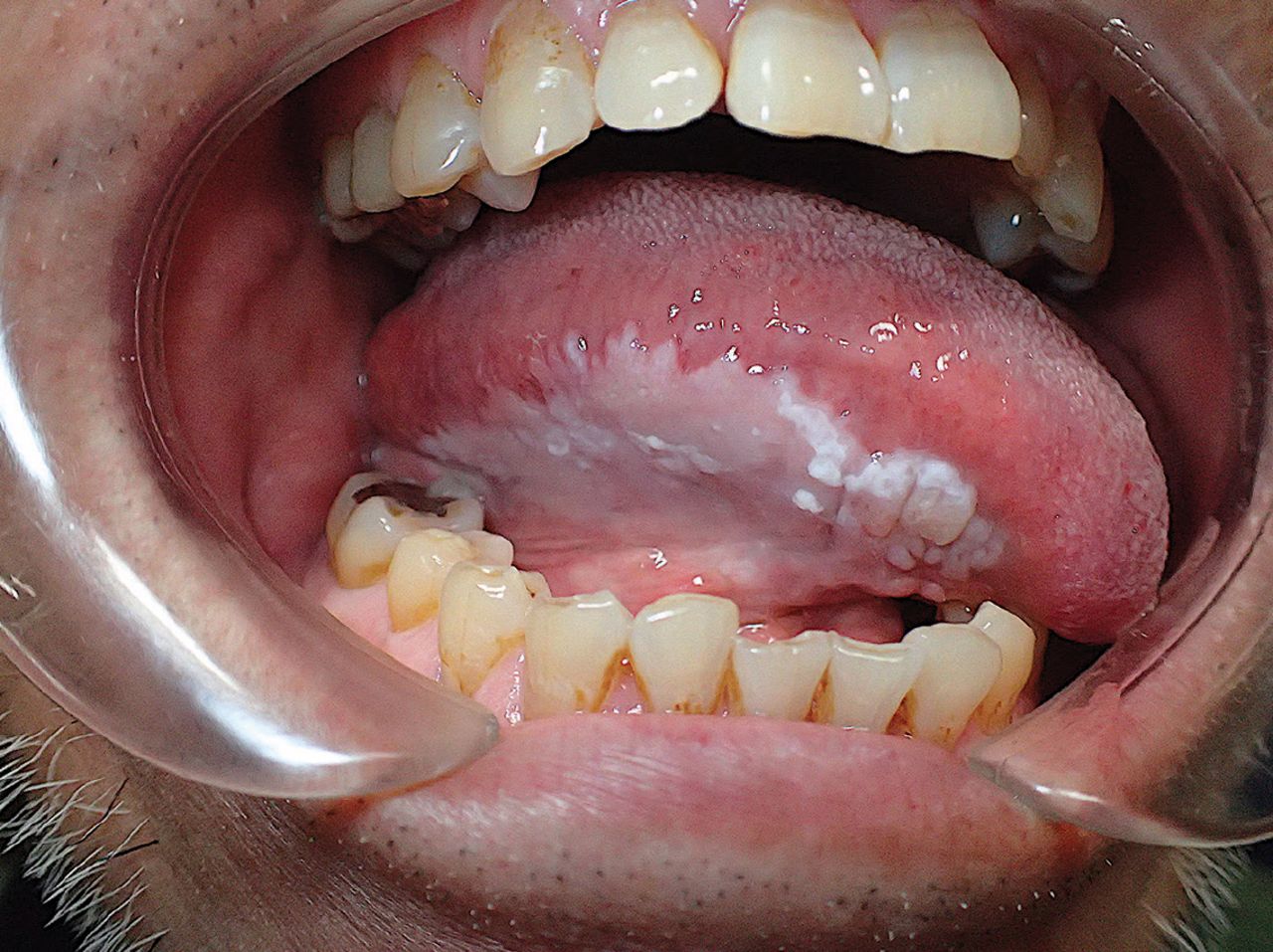Is speckled leukoplakia a cancer ?
SPECKLED LEUKOPLAKIA :
Speckled leukoplakia is a condition in which one or more white patches or spots (lesions) forms inside the mouth.
Leukoplakia is different from other causes of white patches such as thrush or lichen planus because it can eventually develop into oral cancer. Within 15 years, about 3% to 17.5% of people with leukoplakia will develop squamous cell carcinoma, a common type of skin cancer.
The likelihood of developing cancer from leukoplakia depends on the size, shape, and appearance of abnormal cells. Leukoplakia is a condition that involves white patches or spots on the inside of the mouth. It can be caused by chewing tobacco, heavy smoking, and alcohol use.
TYPES OF SPECKLED LEUKOPLAKIA :
There are two main types of leukoplakia:
- Homogenous: A mostly white, evenly colored thin patch that may have a smooth, wrinkled, or ridged surface that is consistent throughout.
- Non-homogenous: A mainly white or white-and-red, irregularly shaped patch that may be flat, nodular (having protrusions), or verrucous (elevated). Additional sub-classifications, such as ulcerated and nodular (speckled), may also be made, and can help predict the likelihood that a patch will become cancerous.
Non-homogenous leukoplakia is seven times more likely to become cancerous than the homogenous type.
Proliferative verrucous leukoplakia (PVL) (also called florid papillomatosis) is a rare but especially aggressive form of oral leukoplakia. Studies show it is strongly associated with the presence of Epstein-Barr virus, a type of herpes virus. Nearly all cases will eventually become cancerous at a number of different sites. PVL is usually diagnosed late in the development of leukoplakia, as it takes time to spread to multiple sites. It also has a high rate of recurrence.
There is also a condition called oral hairy leukoplakia, which also happens as a result of having the Epstein-Barr virus, which stays in your body throughout your life. People with weak immune systems, like people with HIV/AIDS, can develop oral hairy leukoplakia. This condition looks like its name—white hairy patches, often with folds so it looks like hair is growing out of the folds. These spots mostly happen on the tongue, but might be found in other parts of the mouth. Oral hairy leukoplakia doesn’t become cancer, but if you have it, you will probably want to talk to your provider about checking for HIV/AIDS.
WHAT ARE THE CAUSES OF SPECKLED LEUKOPLAKIA ?
Leukoplakia is often associated with the following:
- Heavy smoking.
- Use of chewing tobacco or snuff
- Chewing areca nut (also known as betel nut), which grows in the tropics of Asia, the Pacific, and parts of east Africa.
- Heavy use of alcohol (although not all studies show this link).
Some cases of leukoplakia have no known cause (this is called idiopathic leukoplakia).
Most cases occur in men who are between the ages of 50 and 70. Fewer than 1% of cases are in patients under the age of 30.
WHAT ARE THE SIGNS AND SYMPTOMS OF SPECKLED LEUKOPLAKIA ?
Some research has shown that patches on the floor of the mouth and the underside or sides of the tongue are more likely to be cancerous. However, not all studies agree that location is an important factor. The size of a patch has no link to whether it may become cancerous.
Factors that are strong indicators of leukoplakia transforming to cancer include the appearance of:
- Nodules.
- White or red masses with a pebbled appearance.
- Ulceration.
- Increased firmness.
- Bleeding.
The white patches of leukoplakia do not cause symptoms, they are often first noticed by healthcare providers during a routine examination.
Before a diagnosis of leukoplakia is made, other possible causes of the white patches are investigated. These could include friction inside the mouth (caused by something such as dentures), repeated biting of the cheek, fungal infection or lichen planus.
If no cause is found and the white patches are not gone after two to four weeks, a biopsy (tissue sample) is taken and sent to the laboratory for examination.
If the biopsy still does not show a clear diagnosis, the white patch may be confirmed as leukoplakia, meaning that it has the potential to become cancerous.
HOW TO TREAT SPECKLED LEUKOPLAKIA ?
The main goal of treating leukoplakia is to prevent it from becoming cancer. However, treatment is a challenge and results are often mixed. Treatment may remove the lesions, but a fair number of them return.
Medical management:
- Stop using tobacco and alcohol.
- Eat a diet rich in fruits and vegetables.
- Retinoids (vitamin A-based treatments used to treat acne and psoriasis) taken by mouth may help reduce lesions, but relapses and side effects are common.
- Oral (by mouth) Vitamin A and beta-carotene supplements can help clear the white patches, but they will appear again once the person stops taking the supplements.
- Isotretinoin supplements have been found to be more effective than beta-carotene in preventing cancerous changes.
Surgical management:
- Removing lesions with surgery. However, there is still a 10% to 20% chance that the lesions will return, and a 3% to 12% chance of developing cancer in the treated areas.
- Removal of lesions by laser.
- Photodynamic therapy (use of light-activated cancer drugs).
- Cryotherapy (use of freezing to remove lesions).
- Electrocauterization (use of an electrically heated needle or other instrument to remove lesions).



Comments
Post a Comment